We’re in the big leagues now
UC Santa Cruz was invited in November to join the Association of American Universities, a prestigious achievement that highlights the impact and quality of the campus’s research and graduate and undergraduate education. Membership in the AAU provides UC Santa Cruz with greater opportunity to shape and advocate for the future of higher education.
The association, founded in 1900, has 65 members, including six other UCs and private institutions such as Harvard. This is the first time the association has invited new members since 2012.
“UC Santa Cruz has long been known for the pioneering and transformational research of its faculty, students, and staff across and between disciplines. Election to the AAU is a formal acknowledgment of the power that comes from applying diverse perspectives to the world’s biggest challenges,” said UC Santa Cruz Chancellor Cynthia Larive.
In deciding whether to invite a university to join, the association evaluates a range of indicators, such as research funding, faculty awards and honors, citations, doctoral education, undergraduate education, and more.
“AAU’s membership is limited to institutions at the forefront of scientific inquiry and educational excellence,” said AAU President Mary Sue Coleman.
Strengthening support for grad students
Chancellor Cynthia Larive in February announced two new venues to help UC Santa Cruz better support graduate students:
• A new Senate-Administrative Graduate Education working group to develop a comprehensive, actionable plan for strengthening graduate education at UC Santa Cruz.
• The Chancellor’s Advisory Committee on Graduate Education, a standing group of graduate students and faculty representatives tasked with examining and making recommendations related to graduate-student support.
“Together, these two groups will help to guide our campus as we chart a new course,” Larive said.
The working group and standing committee follow additional initiatives to provide graduate students with greater support. Larive announced in January new, guaranteed funding packages for Ph.D. and MFA students, as well as a new housing supplement until more affordable campus housing becomes available.
Fusing art and native culture
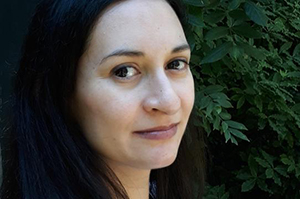
Yve Chavez, assistant professor in the History of Art and Visual Culture Department
Born and raised in Los Angeles as a member of the Tongva tribe, Yve Chavez grew up on the land of her ancestors and has successfully merged her love of art and art history with her profound knowledge of her native culture.
She started a new chapter of her life last fall as an assistant professor in the History of Art and Visual Culture Department (HAVC) at UC Santa Cruz, teaching undergraduate courses in curating, California Indian art, and the missions at the borderlands (California, Arizona, New Mexico, Texas, and Florida).
The focus of her research has been centered on the Chumash and Tongva artistic legacies found at four Southern California missions. She wants to ensure that the people who belonged to these tribes during the mission era are not left out of California mission art studies’ narratives.
Grants fever

Associate professor of theater arts Gerald Casel
Gerald Casel, associate professor of theater arts, has received a grant from the National Dance Project to create a new work titled Not About Race Dance. His project is one of 20 selected for funding to support the creation of new dance works that will tour the United States in 2020.
Now in its third decade, the National Dance Project is widely recognized as one of the country’s major sources of funding for dance, supporting both the creation and touring of new works.
A panel of national dance artists, presenters, and arts administrators selected this year’s recipients out of 170 competitive applications. Each project is awarded $45,000 for the creation of the new work, as well as $10,000 in unrestricted general operating support.
Casel noted that the grant also includes touring funds for national presenters and residency centers—such as the Maggie Allesee National Center for Choreography at Florida State University and the National Centre for Choreography at the University of Akron, Ohio—where they will hold creative and technical residencies.
Can we talk?
UC Santa Cruz has established a new master’s degree program in Natural Language Processing (NLP), offered from the UCSC Silicon Valley Campus in Santa Clara. This innovative professional degree program will give students a strong background in the advanced computational technologies used to process and analyze the natural language that humans speak and write.
The 11-month program, administered by the Department of Computer Science and Engineering in the Baskin School of Engineering at UC Santa Cruz, is designed to meet the growing need for people with expertise in the rapidly growing field of natural language processing. The initial cohort of students will start in fall 2020 (the deadline for applications was February 3).
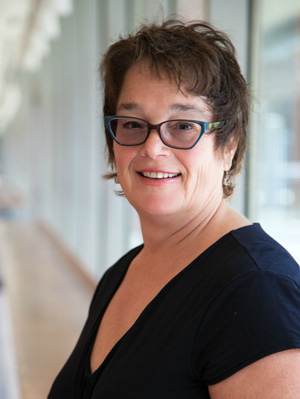
Marilyn Walker directs the new Natural Language Processing graduate program. (Photo by C. Lagattuta)
Natural language processing is the foundation for voice-controlled digital assistants like Amazon’s Alexa and Apple’s Siri, as well as machine translation, internet search engines, and a growing number of other applications.
Natural language processing focuses on the development of computer programs that can understand, generate, and learn from human language. It provides algorithms, methods, and tools for analyzing both text and speech, and it provides key capabilities for many areas of artificial intelligence (AI).
“Conversational AI is huge these days,” said Marilyn Walker (Rachel Carson ’84, computer and information sciences), a professor of computer science and engineering and director of the new NLP program. “There is also a lot of work in the area of extracting knowledge from text. All the big tech companies, like Apple, Google, and Microsoft, are working in these areas.”
Looping in college coders
Computer science is known for being a heavily male-dominated field, and this disproportion between the genders has gotten worse rather than better over the last three decades. According to Emily Chang’s book Brotopia: Breaking Up the Boys’ Club of Silicon Valley, nearly 40% of computer science degrees in 1984 were earned by women, compared to just 22% today.
In an effort to encourage more women to enter the field, the national nonprofit Girls Who Code (GWC) has been working to

Harshitha Arul Murugan is president of the UCSC branch of Girls Who Code.
change the collective image of what a computer scientist or engineer looks like, providing models of female computer scientists through books, speakers, and programs that teach girls practical computing skills.
GWC’s main focus has been on high-school and middle-school girls, but as an estimated 30,000 of its programs’ 185,000 alumni are reaching college age, the organization has begun expanding its reach. Last year, GWC announced it was launching a new College Loops program, and students at UC Santa Cruz were quick to establish their own branch.
Harshitha Arul Murugan (Crown ’21, computer science), current president of the UCSC branch, has some ambitious plans for how to encourage retention of women in tech on campus. For example, she hopes to create a kind of “big sister” program that pairs freshmen and sophomores with juniors and seniors for one-on-one mentoring to encourage the lower-division students to stay in engineering majors.
New Center for the Middle East and North Africa
UC Santa Cruz has established a new Center for the Middle East and North Africa that will focus on the culture, history, and politics of the region.

Demonstration of Algerians in Algiers (photo by Adjer)
The center is designed to be an interdisciplinary hub for faculty, students, and the wider community to research and study an array of subjects that span thousands of years and are of critical importance today, such as current migration policies.
It will bring scholars, artists, and policy makers from around the globe for seminars and conferences, and produce a variety of different events for public engagement.
The Center for the Middle East and North Africa will be directed by Jennifer Derr, UC Santa Cruz associate professor of history, who last summer received a prestigious $480,780 National Science Foundation Faculty Early Career Award.
“UCSC has exceptional faculty strength in the study of North Africa, a field which bridges Africa, Europe, and the Middle East,” noted Tyler Stovall, dean of humanities at UC Santa Cruz. “In this field we are one of the strongest universities in America, and the new center will further highlight our prominence in this area.”
Alumna wins prestigious MacArthur Fellowship
Stacy Jupiter, a marine scientist with the Wildlife Conservation Society who earned her Ph.D. in ecology and evolutionary biology at UC Santa Cruz in 2006, was among the 26 MacArthur Fellows for 2019.
The prestigious MacArthur fellowships, awarded annually by the John D. and Catherine T. MacArthur Foundation for “extraordinary originality and dedication,” come with a no-strings-attached award of $625,000 over five years.

UCSC alumna Stacy Jupiter is director of the Melanesia Program for the Wildlife Conservation Society.
Jupiter lives in Fiji and works on conservation programs in Melanesia, which includes the countries of Fiji, Papua New
Guinea, Solomon Islands, and Vanuatu, and encompasses nearly 2,000 islands. Melanesia’s extraordinary biodiversity underscores the importance of conservation efforts in the region.
Jupiter’s work involves integrating local cultural practices with field research to develop conservation solutions that protect both the biodiversity of coastal ecosystems and the well-being of communities dependent on them. Working in concert with local communities, Jupiter is establishing and applying new approaches to natural resource management based on traditional ecological knowledge and practices that take into account the livelihoods and food security of inhabitants.
As a graduate student at UC Santa Cruz, Jupiter worked in northern Australia studying how coastal mangroves and coral reefs were affected by land use in a major watershed in Queensland.
Students survey natural reserves
While Alex Krohn was completing his Ph.D. at UC Berkeley, he visited numerous UC Natural Reserves looking for reptiles and amphibians. With dozens of protected wildlands located in a wide variety of ecosystems across the state, the reserves in the UC Natural Reserve System (NRS) are popular places for scientists to collect specimens and do field research.
Trying to determine whether certain species of interest lived on a given reserve, however, wasn’t as easy as Krohn had hoped. Sometimes a reserve’s species list was incomplete, or in other cases was out of date and considerably older than he was.
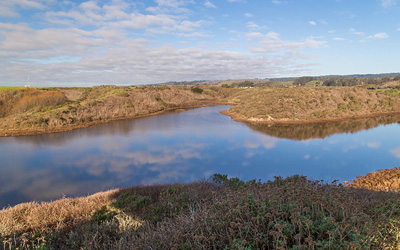
Younger Lagoon Reserve encompasses a seasonal lagoon, beach, and coastal prairie at the western end of Santa Cruz. (Photo by Clayton Anderson)
Now, as assistant manager of the UC Santa Cruz campus reserve, Krohn is working to remedy that problem. In 2019, he
launched a survey of the birds, plants, fish, fungi, insects, vascular plants, mammals, bryophytes (mosses and liverworts), and lichens at all of UC Santa Cruz’s Natural Reserves. In time, he wants this biological snapshot to include all 41 reserves now in the NRS.
Krohn has designed the survey to train students in field biology while benefiting the ecological community. It will not only update knowledge about NRS reserves, but also expose students to field and museum work, while augmenting the collections of UC’s natural history museums.
Mercury rising
Marine fog brings more than cooler temperatures to coastal areas. Researchers at UC Santa Cruz have discovered elevated levels of mercury in mountain lions, the latest indication that the neurotoxin is being carried in fog, deposited on the land, and making its way up the food chain.
![At least one lion studied had mercury levels known to be toxic to species like mink and otters, and two others had "sublethal" levels that reduce fertility and reproductive success. (Photo by Sebastian Kennerknecht [Rachel Carson '07, ecology and evolution])](https://magazine.ucsc.edu/wp-content/uploads/2020/02/wilmers-mercury-puma_450.jpg)
At least one lion studied had mercury levels known to be toxic to species like mink and otters, and two others had “sublethal” levels that reduce fertility and reproductive success. (Photo by Sebastian Kennerknecht [Rachel Carson ’07, ecology and evolution])
Mercury levels found in pumas are approaching toxic thresholds that could jeopardize reproduction and even survival, according to the researchers.
Led by Peter Weiss-Penzias (Oakes ’88, chemistry), an environmental toxicologist who has pioneered the study of pollutants in coastal fog, the study is the first to trace the atmospheric source of supertoxic methylmercury in the terrestrial food web up to a top predator.
“Lichen don’t have any roots so the presence of elevated methylmercury in lichen must come from the atmosphere,” said Weiss-Penzias. “Mercury becomes increasingly concentrated in organisms higher up the food chain.”
The fourth “R”—recess
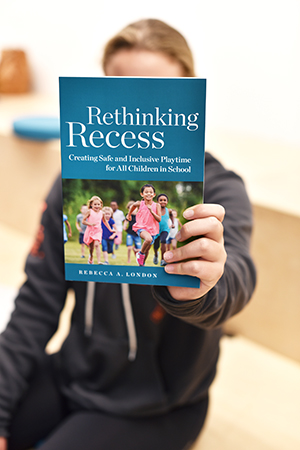
A community member gets excited about Rebecca London’s book launch in Oakland.
Recess is a lot like school lunch: Some kids get lasagna with an organic green salad, some get a burrito out of a box, and some do without. Like lunch, who gets recess—and who gets good recess—is often determined by what school district a student lives in.
“Recess is an essential but often neglected part of the school day,” said Rebecca London, author of the new book Rethinking Recess: Creating Safe and Inclusive Playtime for All Children in School. “Every child needs recess, but recess is not distributed equitably.”
Students of color, low-income students, and students in urban areas are less likely to get recess at all, or they get less recess, said London, assistant professor of sociology.
Withholding recess is the most common discipline meted out in elementary school, according to London.
But that practice flies in the face of evidence that recess attends to all the developmental needs of a child, offering opportunities for physical activity, the development of social and emotional skills like collaboration and empathy, and enhanced potential for academic success.
“A well-administered recess is the best anti-bullying program there is,” said London.
Meeting a legend
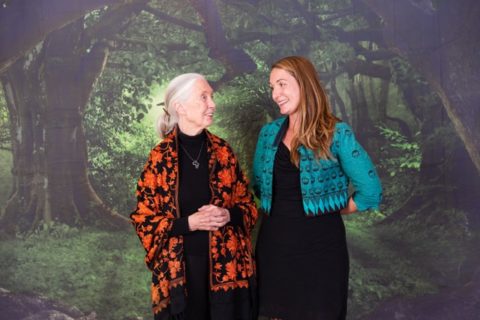
Photo by Drew Altizer Photography
Legendary chimpanzee expert and wildlife advocate Jane Goodall, left, shares a laugh with UC Santa Cruz anthropologist Vicky Oelze at a recent fundraiser for the Jane Goodall Foundation hosted by Foundation Trustee Joanna Miller.

